Yacht Classes
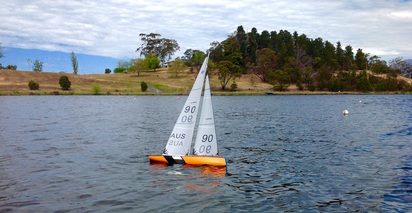
INTERNATIONAL ONE METRE CLASS (IOM)
The International One Metre Class (IOM) is one of the most popular radio sailing class and has a strong International following. The International One Metre - International Class Association has taken over responsibility for management of the class and Australia was the first National Class Association recognised by the International body.
The class rules are very tight with three one design rigs permitted and restrictions on construction materials, overall and ballast weight, and draft. There is a maximum overall length of one metre and a minimum weight of 4 Kg. These rules are aimed at controlling costs and enabling the amateur builder to produce a competitive yacht.
The IOM is sailed in all Australian States and is Australia’s fastest growing class with over 500 boats registered.
IOM ICA Website
IOM Class Rules
The International One Metre Class (IOM) is one of the most popular radio sailing class and has a strong International following. The International One Metre - International Class Association has taken over responsibility for management of the class and Australia was the first National Class Association recognised by the International body.
The class rules are very tight with three one design rigs permitted and restrictions on construction materials, overall and ballast weight, and draft. There is a maximum overall length of one metre and a minimum weight of 4 Kg. These rules are aimed at controlling costs and enabling the amateur builder to produce a competitive yacht.
The IOM is sailed in all Australian States and is Australia’s fastest growing class with over 500 boats registered.
IOM ICA Website
IOM Class Rules
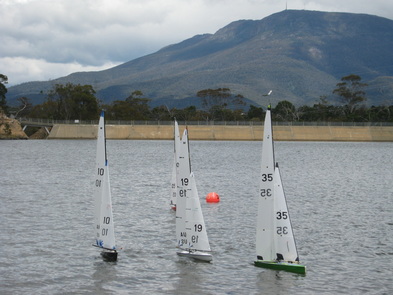
INTERNATIONAL MARBLEHEAD CLASS (M or RM)
The Marblehead was developed by Roy L Clough of the Marblehead Model Yacht Club in Massachusetts, USA and given International status by the predecessor of the ISAF-RSD in 1937.
A restricted development class, the Marblehead is controlled by a few maximum dimensions, overall length (1.29 metres), sail area (0.5161 square metres) and draft of 660 mm. There is ample scope to develop hull shape, rigs, foils etc. Current designs are around the 4 Kg all up weight
The most popular of the International classes for many years until recently challenged for this status by the IOM, the Marblehead is sailed in all Australian States and has a big following in Queensland.
National Marblehead website
IRSA Marblehead Website
The Marblehead was developed by Roy L Clough of the Marblehead Model Yacht Club in Massachusetts, USA and given International status by the predecessor of the ISAF-RSD in 1937.
A restricted development class, the Marblehead is controlled by a few maximum dimensions, overall length (1.29 metres), sail area (0.5161 square metres) and draft of 660 mm. There is ample scope to develop hull shape, rigs, foils etc. Current designs are around the 4 Kg all up weight
The most popular of the International classes for many years until recently challenged for this status by the IOM, the Marblehead is sailed in all Australian States and has a big following in Queensland.
National Marblehead website
IRSA Marblehead Website
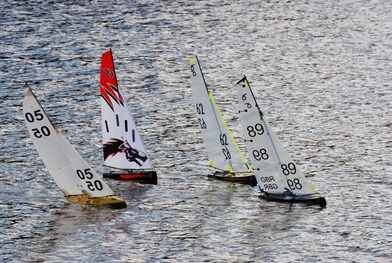
RG65 Class and Dragon Force DF65 Restricted Class
The Dragon Force DF65 is a very economical Restricted Design class that complies with the RG65 rule, with the exception of the A+ Rig. The DF can sail either as a resticted rule one design class or can be optimsed as a RG65 rule compliant boat. It is one of the fastest growing R/C classe in the world with over 6000 boats sold worldwide. Local fleets are sailing at Franklin, Lauderdale, Cygnet, Puddleduck (near Richmond), Launceston (Breadalbane, Exeter) and in the North West (Devonport). There are probably 60 to 100 DF's in the state. Further information can be found at the following links
DF Racing World Website
Building and Tuning Tips
DF65 Australian Supplier (Hobby Warehouse)
The Dragon Force DF65 is a very economical Restricted Design class that complies with the RG65 rule, with the exception of the A+ Rig. The DF can sail either as a resticted rule one design class or can be optimsed as a RG65 rule compliant boat. It is one of the fastest growing R/C classe in the world with over 6000 boats sold worldwide. Local fleets are sailing at Franklin, Lauderdale, Cygnet, Puddleduck (near Richmond), Launceston (Breadalbane, Exeter) and in the North West (Devonport). There are probably 60 to 100 DF's in the state. Further information can be found at the following links
DF Racing World Website
Building and Tuning Tips
DF65 Australian Supplier (Hobby Warehouse)
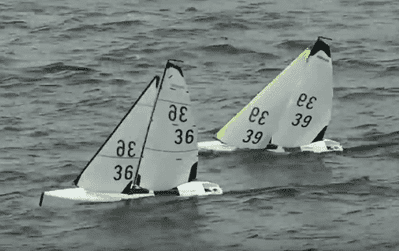
DF95
The Dragon Flite DF95 is a relatively cheap radio yacht that offers remarkable performance in a Restricted Design Class. The "Big Brother" to the DF65 above, this class is an excellent starting point for those new to radio sailing, and offers more experienced skippers the opportunity to race in a One Design fleet. The complete boat with No. 1 Rig, almost ready to race (some assembly is required), including transmitter and receiver can be purchased online for around $500 from www.hobbywarehouse.com.au.
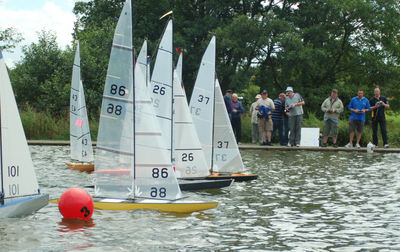
A CLASS
The Radio A class is the largest and most majestic of all the main stream radio controlled yachts sailed and raced in this country. The design dates back to the nineteen twenties when the boats would have been sailed free or later on with basic vane gear. The modern designs have used the changes in materials and equipment to produce lighter and faster yachts. The size can be up to around two meters long with a mast up to two and a half meters. Each hull has to be measured and the draft and weight recorded before the sails area can be worked out and made.
The Radio A class is the largest and most majestic of all the main stream radio controlled yachts sailed and raced in this country. The design dates back to the nineteen twenties when the boats would have been sailed free or later on with basic vane gear. The modern designs have used the changes in materials and equipment to produce lighter and faster yachts. The size can be up to around two meters long with a mast up to two and a half meters. Each hull has to be measured and the draft and weight recorded before the sails area can be worked out and made.